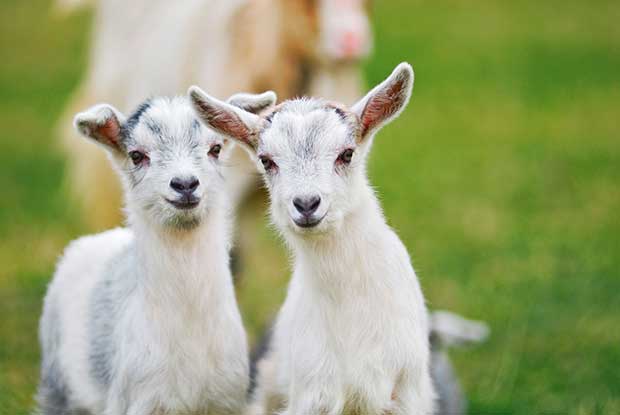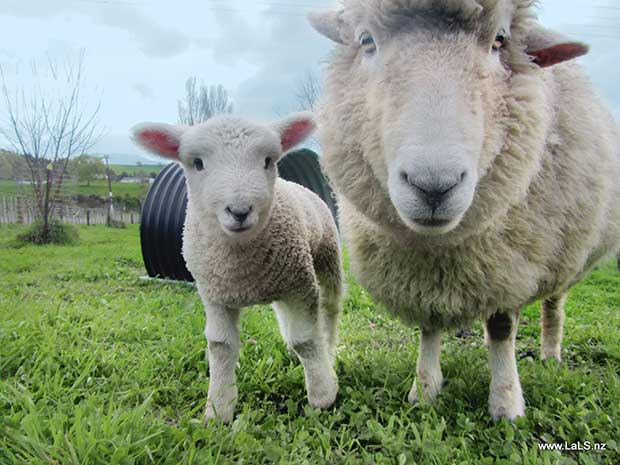Tips for caring for young animals in spring

Spring is a busy time and there are important future-proofing jobs if you have young animals.
Words: Nadene Hall
Your monthly guide to livestock and pasture care.
LOOK OUT FOR MASTITIS
Look out for mastitis in milking does, ewes and cows, most commonly seen on the second or third day after delivery. First signs will be a severe hardening anywhere on the udder, ranging in size from a flattened golf ball to the entire udder.
The udder will appear hot and swollen and she will be reluctant to feed her babies. The milk will appear watery, may be blood-stained, or contain clots or even pus. Treatment will require a vet visit and a course of antibiotics.
EWES THAT HAVE LAMBED
Ewes that have lambed should be on your best feed available. Keep any ewes that are due to lamb as close to the house as possible so you can keep an eye on them, and help out if necessary.
HAVE A BIRTHING KIT READY
Have a birthing kit ready, including colostrum. It is best to get fresh colostrum, ideally from the animal’s mother, and feed at least 600ml for a lamb or kid and 4-litres for a calf within 24 hours of it being born.
If a ewe or doe is reluctant to feed, get her into a pen, tie her or use a barrier to keep her in a small area and then bring the lamb or kid up to feed. For a calf, put the mother in a race and bring it up to feed that way.
RECOVER LAMBS FROM CHILLING
Lambs more than five hours old have a better chance of recovering from chilling if they receive an injection of dextrose before they are warmed up. They will have used up the energy stores they were born with and if warmed up while those energy store are exhausted, you just hasten their death. Dextrose must be diluted and injected into the abdomen – talk to your vet.
Read more 1 Easy way to save a cold wet lamb
SHELTERS
Lambs need a dry shelter, so they use their energy to grow, instead of to keep warm. Shelters need to be kept clean too so lambs don’t pick up bacteria and/or disease.
Lambs can be docked in the days after birth.
SCOURS

Scours in lambs and ewes in spring can be from lush pasture, thought to be caused by high nitrates or sugars. Feeding out hay can help reduce scours due to lush pasture. However, you also need to rule out a parasite burden and the best way to do this is by using a Faecal Egg Count Reduction Test (FECRT).
NAVAL TREATMENTS
All calves, lambs and kids should have their naval treated as soon as possible after birth with an iodine dip or spray right up to the belly. Be vigilant in checking for signs of navel ill. Symptoms include a cord that stays moist, and/or swollen, especially up near the belly, there may be a discharge, a bad smell, the animal will appear dull and won’t feed, and its joints may swell. It can die if not treated quickly enough.
AT RISK
Kids will be at risk of picking up coccidiosis if kept in close quarters. Watch for a dark, watery scour (it may appear blood-stained). Separate any animal you think is infected and clean out the stall so it is not passed on to others.
WHAT IS FECRT?
A Faecal Egg Count Reduction Test involves collecting faeces from specific animals which have not been drenched for at least four weeks.
It could be 10 animals from a large herd/flock, or from every animal if you have small numbers so a vet can ascertain the parasite burden.
The animals are then weighed and accurately drenched. A week to 10 days later, a vet will check faecal samples again to see if the drench has had any effect. This will tell you if the drench is working, and if any parasite is show resistance.
CHECK PREGNANT COWS TWICE A DAY
Have those that have already calved on your best pasture.
Magnesium deficiency can show up in spring usually in pregnancy or after calving, more common in cows that have been fed hay and silage and not much grass over winter. Cows may appear excitable/agitated, then go down and thrash around.
Magnesium is required every day so while can be provided in licks, a cow needs to lick it often. Some farmers uses slow-release bullets just before birth, injectible magnesium, or a powder added to molasses and spread on hay.
READ MORE
Love this story? Subscribe now!
 This article first appeared in NZ Lifestyle Block Magazine.
This article first appeared in NZ Lifestyle Block Magazine.
